Inside Jupiter
By Scott Bolton
NASA’s Juno spacecraft is mapping the history of our Solar System in our giant neighbor.
NASA’s Juno spacecraft is mapping the history of our Solar System in our giant neighbor.

Juno is a true mission of exploration and discovery. The data from the spacecraft have been paradigm-shifting for our understanding of giant planets, providing a revolutionary new view of Jupiter, both challenging our theories and presenting beauty that is almost beyond belief. The images returned from Juno are breathtaking, bridging art and science.
Although Juno represents many firsts for NASA, one of the most interesting is how the spacecraft’s camera, JunoCam, is set up to involve the public in the mission. The Juno team has chosen to make all of Juno’s raw, unprocessed imaging data available to the public via the mission’s website. This decision not only allows, but rather requires, that all of the pictures of Jupiter taken by Juno are essentially created by the public, because there is no official JunoCam science team. The citizen scientists involved are not modifying NASA images, they are creating the images themselves. They are literally the first humans to see Juno’s discoveries. Jupiter’s giant polar cyclones, the first high-resolution close-up of the shrinking Great Red Spot, the high-altitude pop-up clouds discovered near the edges of the planet’s swirling storms—these are just a few of the discoveries made because of imagery created by citizen scientists. And citizen artists are also involved, creating artwork inspired by Juno’s exploration of Jupiter.
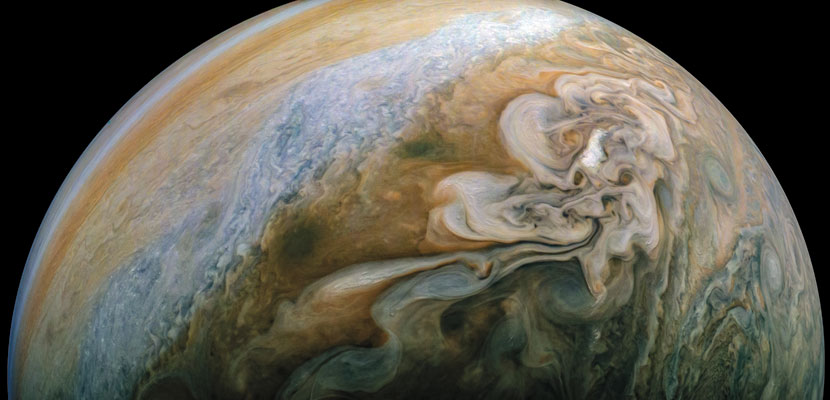
top: NASA/JPL-Caltech/SwRI/MSSS/Kevin M. Gill; bottom: NASA/JPL-Caltech/SwRI/MSSS/Gerald Eichstädt/Seán Doran

Having launched on August 5, 2011, from NASA’s Kennedy Space Center, Juno arrived at Jupiter on July 4, 2016. The journey had started 13 years earlier, when a team of scientists from around the world began meeting to discuss what is arguably one of the most challenging and scientifically ambitious planetary missions NASA has ever attempted. Juno was designed to answer questions raised by knowledge gained over the history of space exploration.
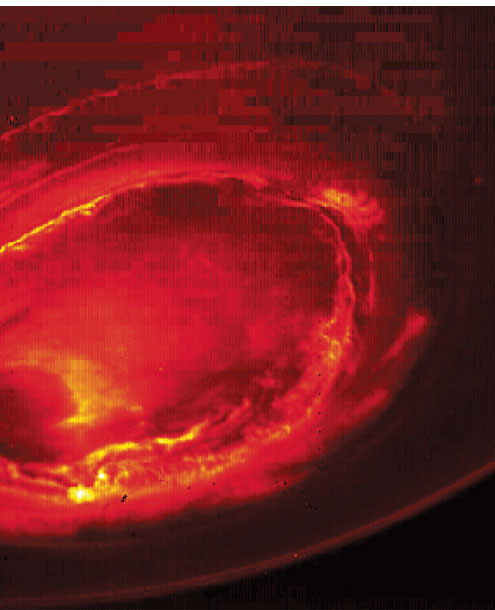
NASA/JPL-Caltech/SwRI/ASI/INAF/JIRAM
Previous missions demonstrated the diversity of the planets and brought up fundamental questions regarding the vulnerability of Earth, how life started, and the origin of our Solar System—topics that rose to the top of NASA’s priorities. Juno was intended to fill a huge gap in our understanding of planetary formation. Previous exploration of Jupiter had shown us just how important this celestial body was, but it also left us with unanswered puzzles related to how Jupiter formed and how its composition was different from that of the Sun. The history and distribution across the early Solar System of water and other volatile compounds vital to Earth and to life were cloaked in mystery. Scientists knew that Jupiter was no ordinary planet, and that it might hold the keys to understanding the creation of the rest of the Solar System.
Jupiter is both a record and a driver of the formation of the planets. It provides a glimpse into the earliest stages of the development of our Solar System.
Jupiter is larger than all of the other planets combined, and its formation shaped the composition of the rest of the Solar System. The planet’s gigantic mass literally threw material all around the early Solar System, including the key ingredients of life—water and organics—but also rocky material. In this way, Jupiter determined not only when Earth formed, but also what the planet is made of: Jupiter’s presence is what made Earth habitable. Learning how Jupiter formed provides a unique glimpse into the earliest stages of our Solar System. Jupiter is also our archetype for extrasolar giant planets, so what Juno learns not only helps us understand our own origin, but also illuminates how planetary systems are formed around other stars as well. Truly, the history of our Solar System is recorded in the formation of Jupiter.
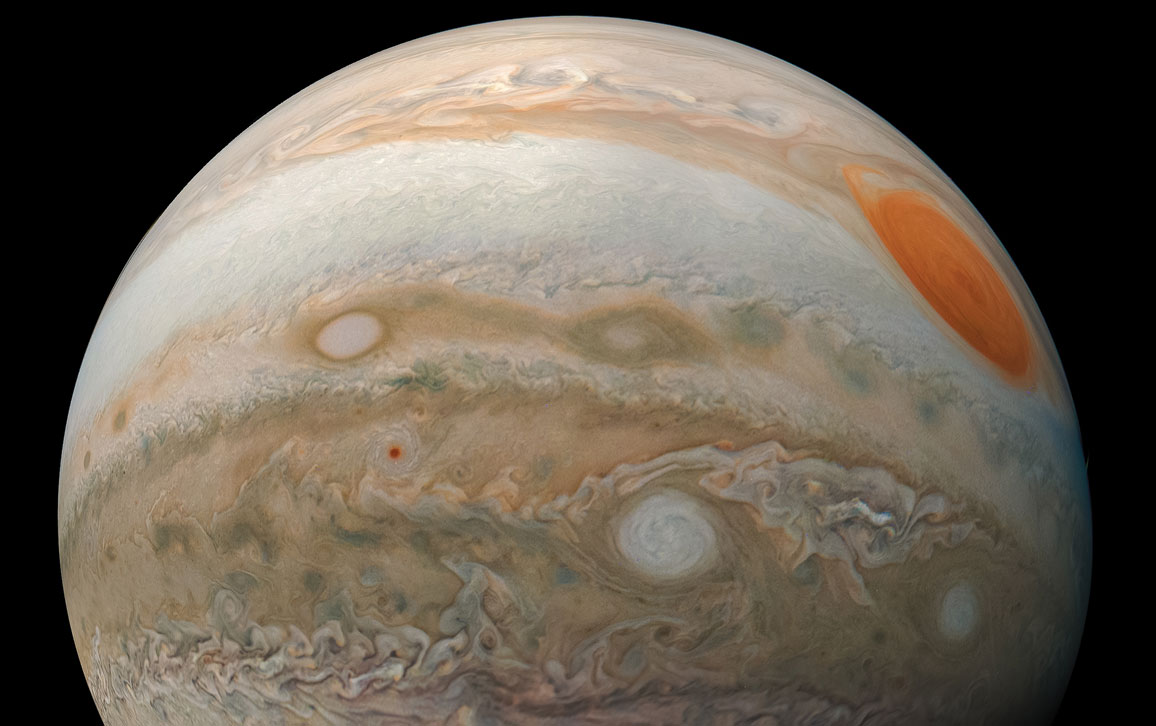
top: NASA/JPL-Caltech/SwRI/MSSS/Kevin M. Gill; bottom: NASA/JPL-Caltech/SwRI/MSSS/Gerald Eichstädt/Seán Doran
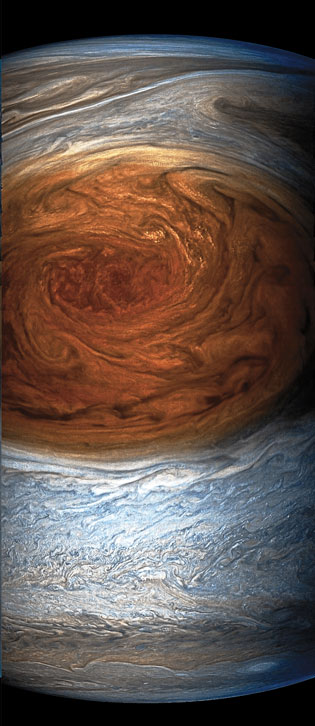
By design, Juno would enter into one of the harshest environments in our Solar System. A magnetic swarm of highly energized charged particles surrounds Jupiter. These particles are so fierce that they are moving at nearly the speed of light: They are capable of penetrating our strongest shielding and can destroy even our most advanced electronic technology. To reveal the secrets of our Solar System’s origin, held captive and shielded from view by Jupiter, a vehicle had to be created that was more armored tank than spacecraft. The scientists and engineers working on this goal blended some of the most advanced shielding technology with new types of instruments capable of seeing the invisible layers below Jupiter’s stormy clouds, and they carefully designed a flight path to thread the needle, finding a route that avoided the most intense radiation and penetrating particles. Juno is the first spacecraft with a radiation shielding vault, pioneering a key tool that will also be needed for future longer- duration human space missions. Radiation protection is the primary challenge to sustained human exploration beyond Earth. Jupiter is a major source of this radiation, filling its surroundings with energetic ions and relativistic electrons. Juno’s mission experience and scientific findings will help protect humans one day as they travel to Mars and beyond.
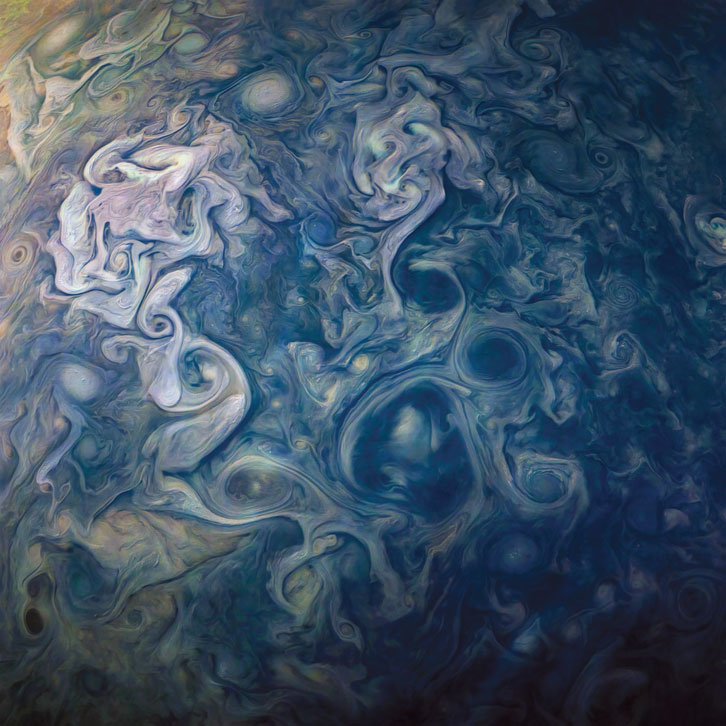
NASA/JPL-Caltech/SwRI/MSSS/Gerald Eichstädt/SeánDoran
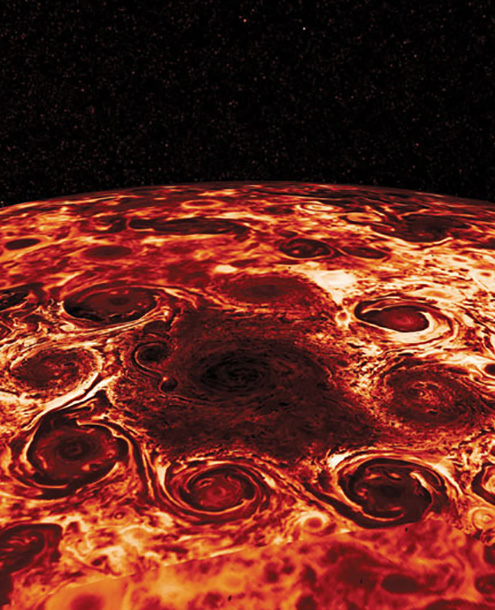
NASA/JPL-Caltech/SwRI/ASI/INAF/JIRAM
By peering beneath the clouds with a powerful suite of instruments, Juno is fundamentally redefining our basic assumptions about the origin and evolution of gas giant planets. High-resolution imagery returned by Juno’s camera has revealed myriad Earth-size cyclones raging in Jupiter’s atmosphere. Microwave measurements have discovered layers of ammonia clouds stretching to great depths. The atmosphere is not homogeneous, which fundamentally challenges our ideas of how giant planet atmospheres work. Juno sees deep within Jupiter into a metallic hydrogen region, searching for evidence of a compact core.
below: NASA/JPL-Caltech/SwRI/MSSS/BjÖrn Jónsson; second below: NASA/JPL-Caltech/SwRI/MSSS/Kevin M. Gill; third below: NASA/JPL-Caltech/SwRI/MSSS/Betsy Asher Hall/Gervasio Robles
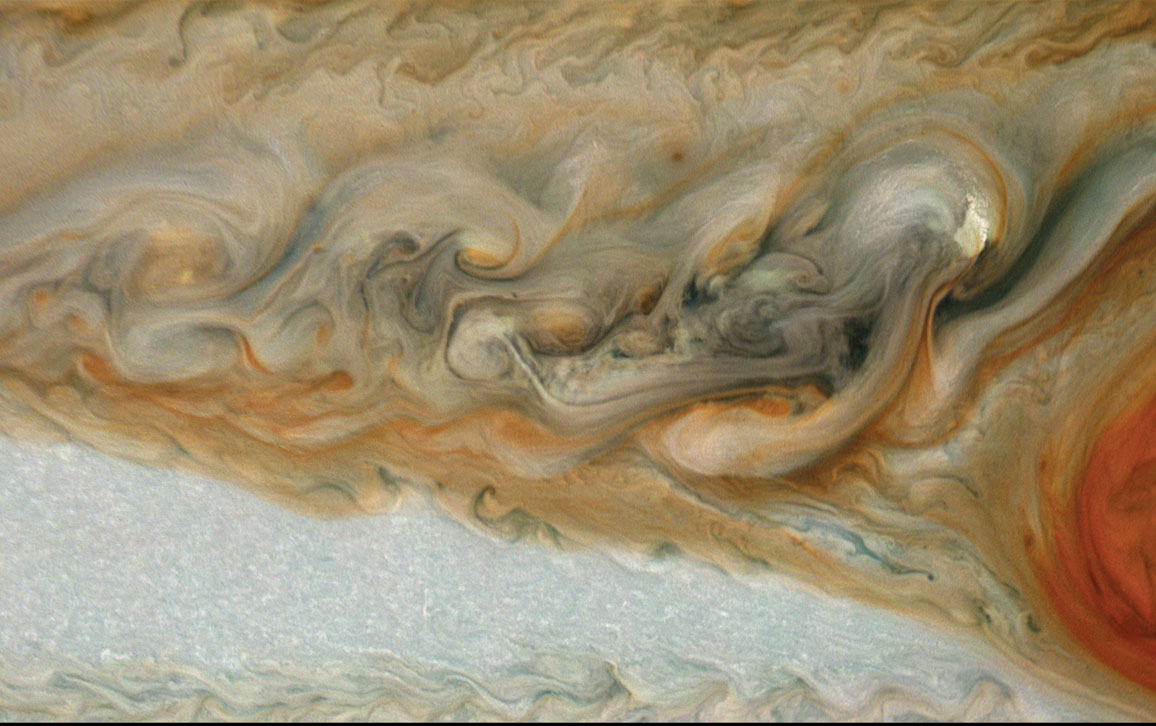
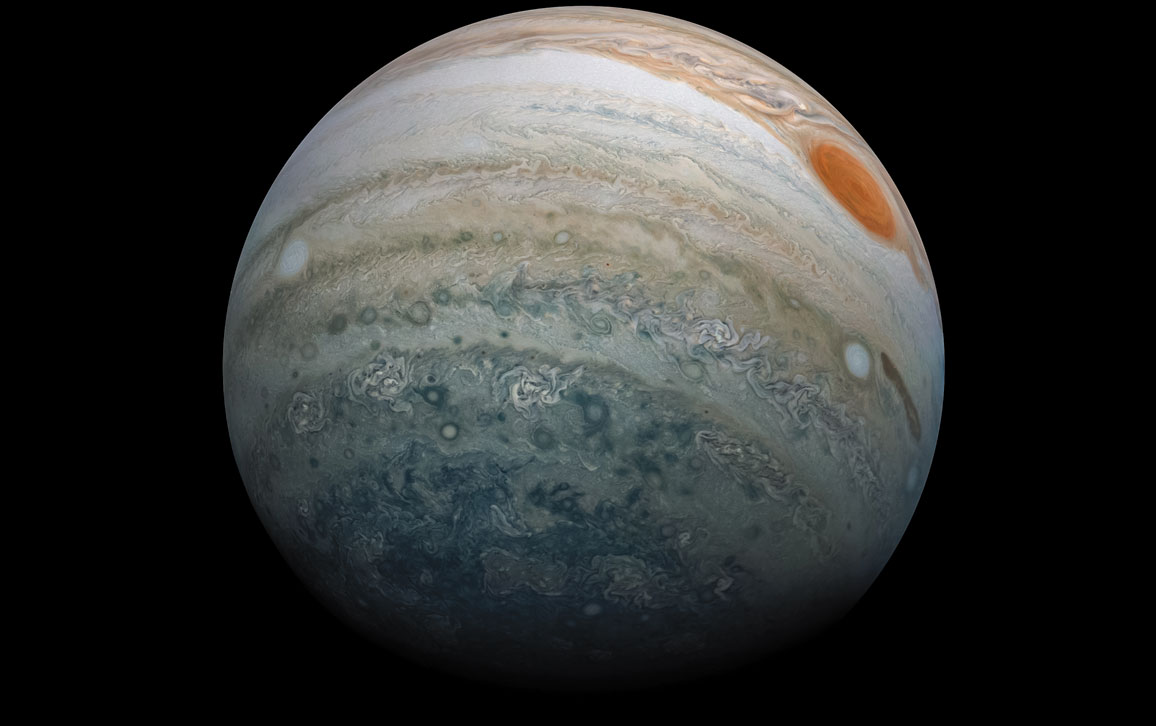
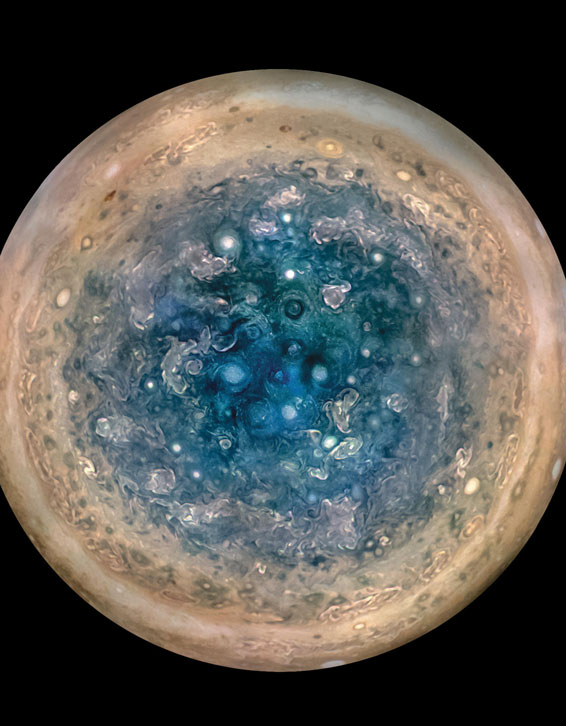
Surprisingly, Juno discovered that Jupiter’s core is fuzzy, without sharp boundaries, opening up new theories to explain this giant planet’s formation and evolution. Possibly, Jupiter suffered a large impact early on, similar to what scientists have theorized about how our Moon was created from an early impact that Earth experienced. Jupiter’s incredibly strong magnetic field had its own surprise: a giant magnetic anomaly called the Great Blue Spot, near the equator.
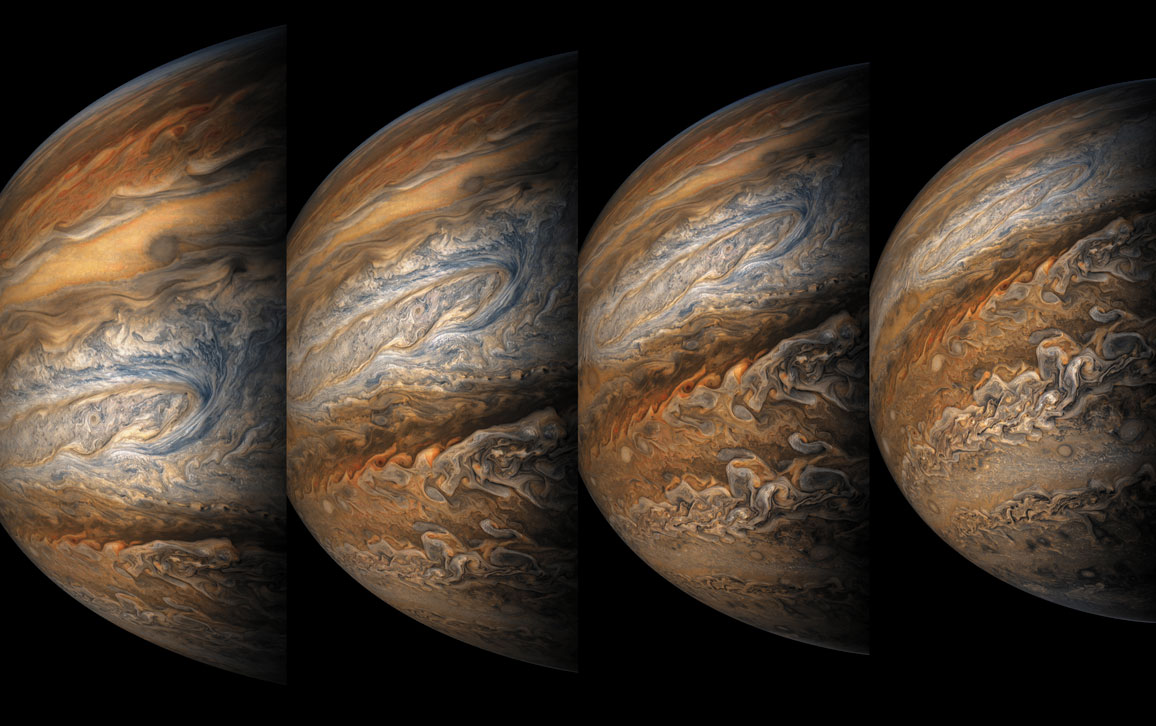
NASA/JPL-Caltech/SwRI/MSSS/Gerald Eichstädt/SeánDoran (above and below)
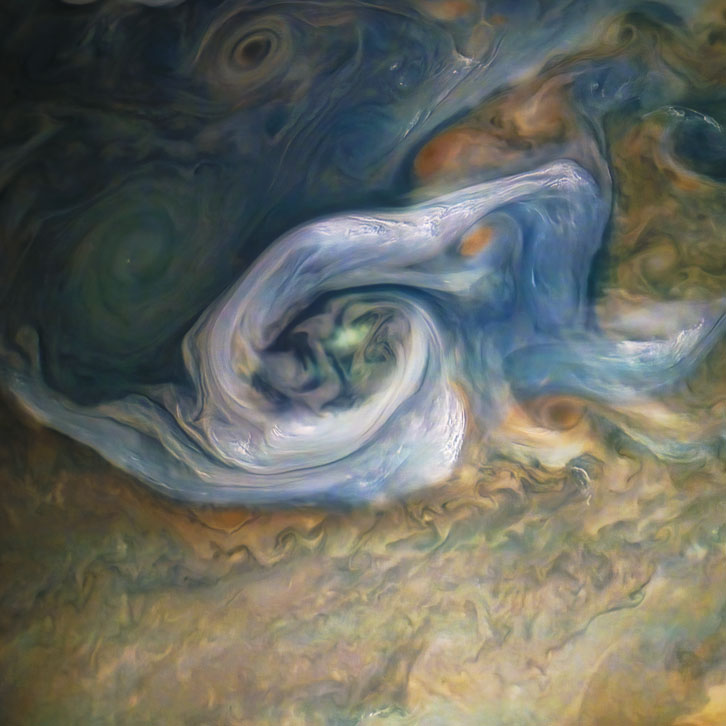
The images returned from Juno are works of art and wonder. But the science results from the mission are simply dramatic.
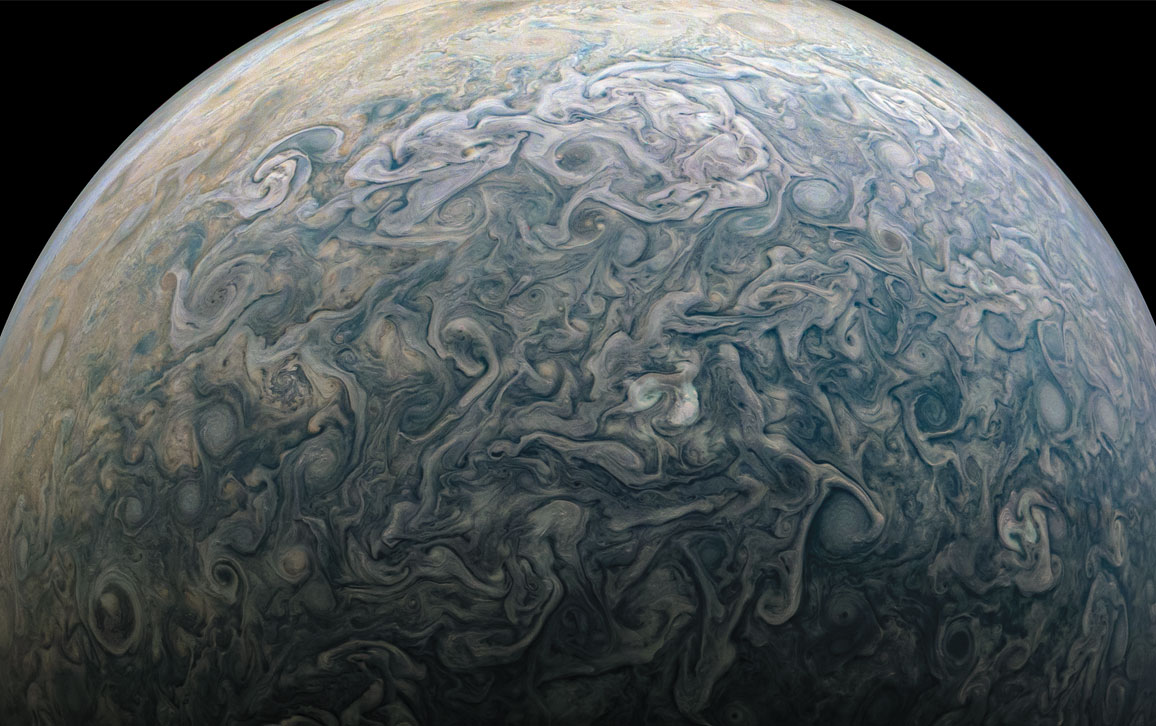
top: NASA/JPL-Caltech/SwRI/MSSS/Kevin M. Gill; bottom: JunoCam/NASA/Synthetrix
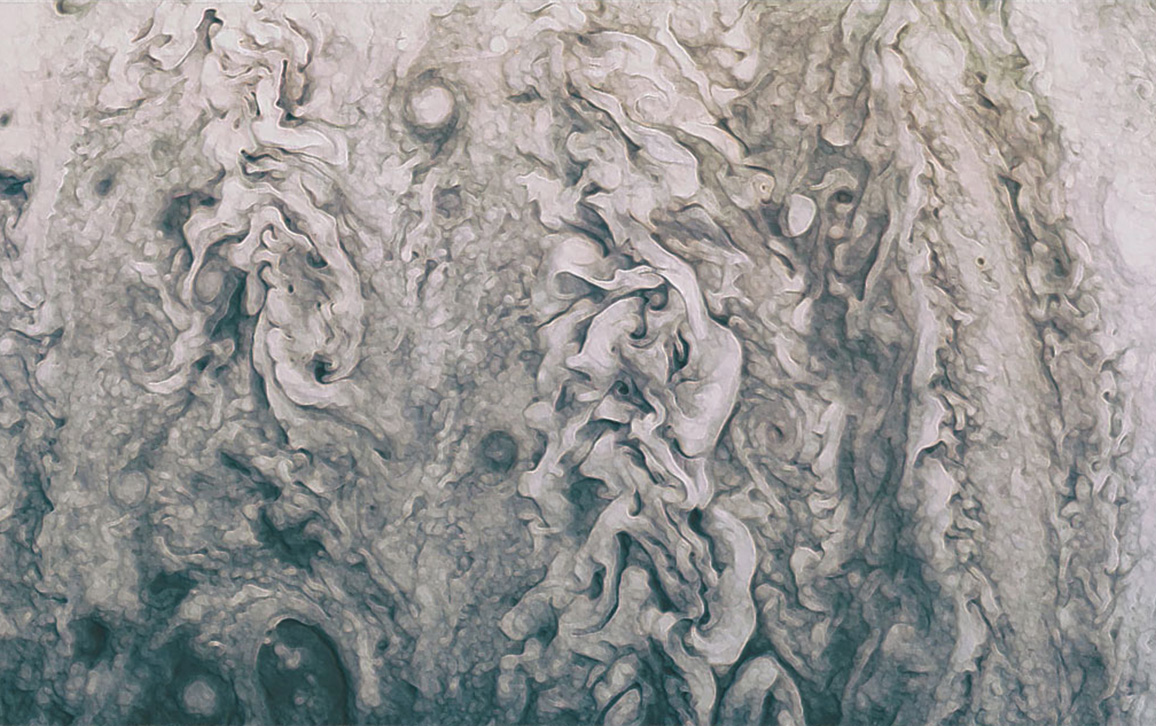
Click "American Scientist" to access home page
American Scientist Comments and Discussion
To discuss our articles or comment on them, please share them and tag American Scientist on social media platforms. Here are links to our profiles on Twitter, Facebook, and LinkedIn.
If we re-share your post, we will moderate comments/discussion following our comments policy.